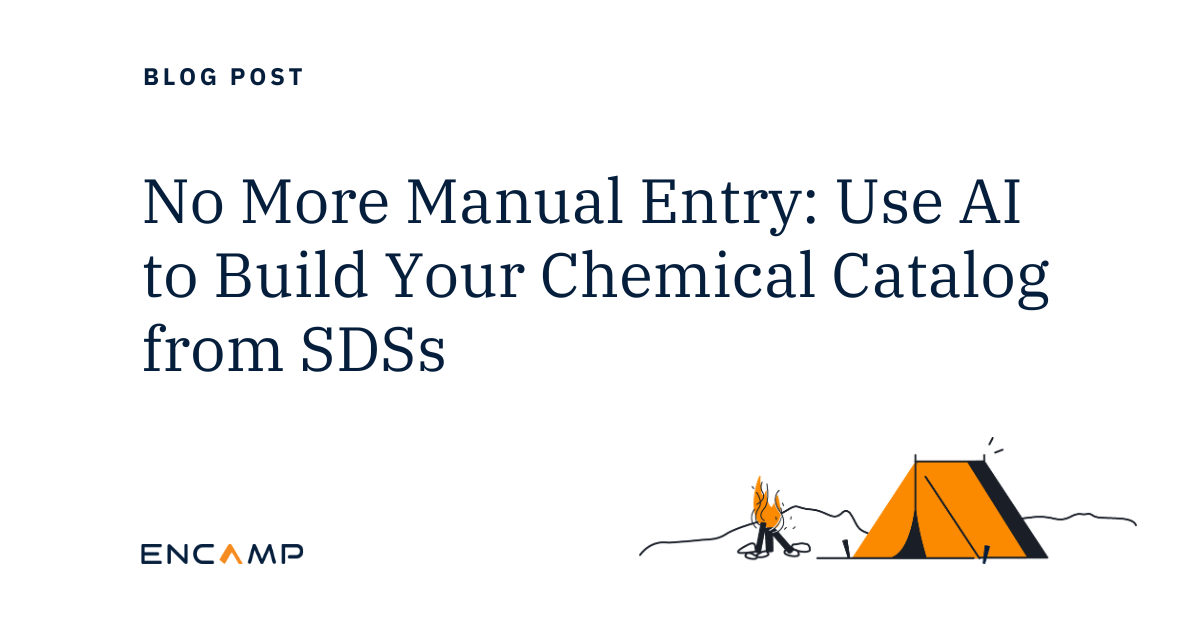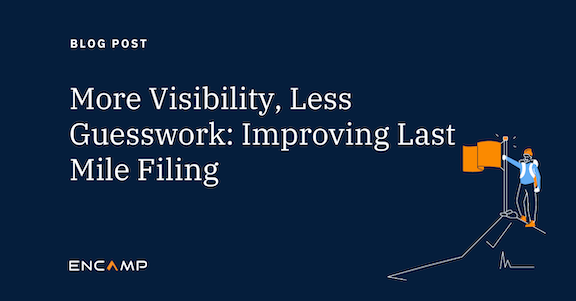
Compliance management in distributed facilities presents unique challenges, from tracking regulatory requirements to standardizing processes across different locations. However, with technological advancements, organizations can leverage digitization to streamline compliance efforts and ensure consistency.
As part of our flagship virtual summit, Blaze by Encamp, we spoke to Nicole McClure, Senior Environmental Sustainability Specialist at Domino’s, on the role of technology in driving compliance in distributed facilities and how Domino’s Pizza successfully implemented technology into its processes. Below are some of the key excerpts that came out of the conversation.
Challenges in managing compliance across distributed facilities
Managing compliance across distributed facilities poses various challenges that organizations must address. One of the key challenges is the need to document and keep up with different regulatory requirements across locations, where one’s legal obligations may differ greatly. Additionally, ensuring that each facility takes ownership of compliance obligations adds complexity. Standardizing processes and procedures, such as reporting methodologies and data input methods, can be daunting when dealing with multiple facilities operating in different jurisdictions.
The role of digitization in addressing compliance challenges
By leveraging technology, organizations can streamline data storage, record-keeping, and reporting, ensuring the necessary information is easily accessible and organized. Digitization enables consistency and efficiency by establishing standardized processes that reduce facility-level confusion and variation.
Organizations can utilize various tools and technologies to enhance compliance management. Platforms like Encamp can empower organizations to create data repositories, allowing for centralized storage and retrieval of compliance-related information and associated analytics. These tools eliminate the risk of relying on individual employees and reduce data losses and inaccuracies associated with turnover or reliance on spreadsheets.
Domino’s Pizza and technology-driven compliance
Domino’s Pizza, a renowned global pizza chain, has embraced change and innovation to address compliance challenges in its supply chain centers. Nicole, a Senior Environmental Sustainability Specialist at Domino’s, has been at the forefront of driving this transformation.
“I think one of the biggest challenges we see is finding an organized way to document and keep up with all of the different regulatory requirements across all of these facilities,” Nicole says. Highlighting the importance of understanding and navigating regulatory nuances between different jurisdictions and the need for facilities to maintain compliance requirements independently.
“We don’t have fifty people on our team trying to make sure that our clients’ ESG goals are being met. It’s a small handful of us. So we really try to find a way to make things more efficient and automated.” – Nicole McClure, Domino’s
Technology has played a crucial role in addressing these compliance challenges and building efficiency in their process.
Dominos utilizes various platforms to provide an activity-based approach to compliance. These tools empower facilities to take ownership of compliance programs, offering task reminders, facility instructions, and document control features. By encouraging facilities to engage in compliance efforts, Domino’s has successfully distributed compliance responsibilities while ensuring standardization across locations.
Embracing technology-driven compliance has yielded significant benefits for Domino’s Pizza. Domino’s has achieved greater operational efficiency by implementing digitization and streamlining compliance management. Reduced time spent on compliance-related tasks has allowed the company’s sustainability team to focus on other initiatives and projects. This has expanded sustainability objectives and increased the ability to meet stakeholder expectations.
Moreover, technology-driven compliance has positively influenced Domino’s brand recognition and reputation. The company demonstrates its commitment to community stewardship by ensuring compliance with environmental regulations. This fosters positive stakeholder relations and strengthens customer trust in the brand’s commitment to sustainability.
Best practices for driving compliance through technology
Organizations must adopt best practices that engage facility managers and employees effectively to get the same results as Dominos and drive compliance through technology.
- Streamlined Data Collection: Implement digital systems for data collection, allowing for accurate and efficient capture of the required information.
- Compliance Tracking: Utilize software solutions or cloud-based platforms to track and manage EPCRA, SARA andHMBP compliance obligations. Implement automated reminders and notifications to ensure timely reporting and submission of required documentation.
- Data Management and Analysis: Centralize data storage to maintain accurate and accessible records for reporting.
- Reporting Automation: Leverage technology to automate the generation and submission of EPCRA, SARA and HMBP reports.
- Regular Updates and Monitoring: Stay updated on EPCRA regulations and reporting requirements changes. Continuously monitor and evaluate the effectiveness of technology solutions in enhancing EPCRA reporting processes, and make necessary adjustments as needed.
By implementing these best practices, you can leverage technology to streamline EPCRA, SARA and HMBP reporting, improve data accuracy, and ensure timely compliance with regulatory obligations.
Conclusion
Integrating technology in compliance management has revolutionized how distributed facilities handle regulatory obligations. Domino’s Pizza is a prime example of how digitization can streamline processes, enhance efficiency, and foster a culture of compliance. By leveraging technology platforms, organizations can empower their facilities to take ownership of compliance programs, ensuring standardization and consistency while meeting stakeholder expectations. As compliance regulations continue to evolve, embracing technology-driven compliance is essential for organizations seeking sustainable success in distributed facility management.




